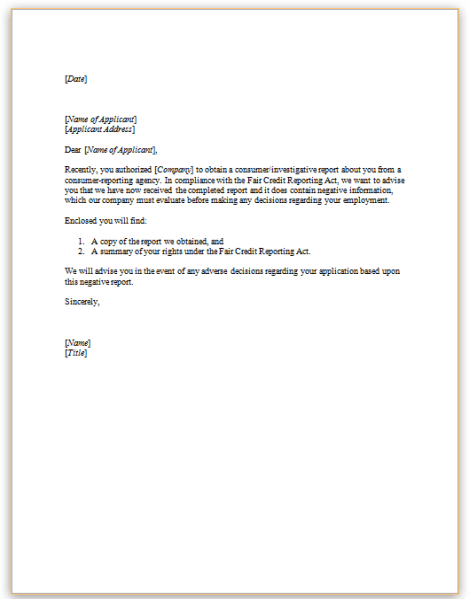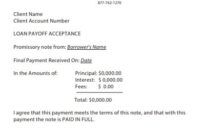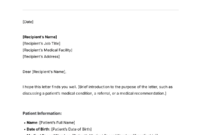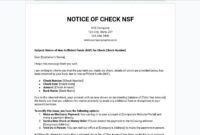Navigating the hiring process can be a tricky business, and sometimes, even after a promising interview, background checks can bring up information that gives an employer pause. It’s a common scenario, and when this happens, there’s a specific legal step employers need to take before making a final decision. This step isn’t just a good practice; it’s a requirement to ensure fairness and compliance with regulations like the Fair Credit Reporting Act (FCRA).
If you find yourself in a situation where a candidate’s background report contains information that might lead you to withdraw a job offer or not hire them, understanding the correct procedure is crucial. This isn’t about immediate rejection, but rather about providing a candidate with an opportunity to review and potentially dispute the information. That’s where a properly structured pre adverse action letter template becomes an indispensable tool for any hiring manager or HR professional.
Understanding the ‘Why’ Behind a Pre Adverse Action Letter
So, what exactly is a pre adverse action letter, and why is it so important? Think of it as a preliminary notice, not a final decision. When a background check or consumer report (which includes things like criminal records, credit history, or even employment verification through a third-party agency) uncovers something that might negatively impact a hiring decision, employers can’t just send a rejection email. The FCRA mandates that you first send a pre adverse action letter. This gives the candidate a heads-up that based on information in their report, an “adverse action” (like not hiring them) is being considered.
The core purpose of this letter is to empower the candidate. It provides them with a window of opportunity to see what information the employer is reviewing. Sometimes, these reports can contain errors, or perhaps there’s context the candidate can provide that clarifies the situation. Without this step, a candidate could be unfairly denied an opportunity based on inaccurate or incomplete data, and the employer could face legal repercussions.
This isn’t just a formality; it’s a critical part of due process. By sending this letter, you’re not just being compliant; you’re also being fair. You’re saying, “Here’s what we found, and before we make a final decision, we want to give you a chance to look at it and respond.” This transparency builds trust, even if the eventual outcome isn’t what the candidate hoped for.

The timeline for this process is also important. While the FCRA doesn’t specify an exact number of days, the general consensus and best practice suggest allowing a “reasonable period” for the candidate to review the information and respond – typically around five business days. This isn’t a hard-and-fast rule, but it’s a good benchmark to ensure fairness without unduly delaying your hiring process.
Essential Elements to Include
- A clear statement that an adverse action is being considered based on information in a consumer report.
- A copy of the consumer report itself (the background check report).
- A summary of the candidate’s rights under the FCRA, which is usually provided by the consumer reporting agency.
- The name, address, and phone number of the consumer reporting agency that prepared the report.
- A statement that the consumer reporting agency did not make the hiring decision and cannot provide specific reasons for it.
- A clear deadline for the candidate to respond and dispute the accuracy or completeness of the report.
Crafting Your Pre Adverse Action Letter Template
Having a solid pre adverse action letter template ready to go is a smart move for any organization. It ensures consistency, saves time, and most importantly, helps you remain compliant with FCRA regulations. When you’re putting together your own template, focus on clarity, neutrality, and ensuring all the legally required information is present. Remember, the tone should be informational and factual, avoiding any language that suggests a final decision has already been made. This is a notification of *potential* adverse action, not the adverse action itself.
Your template should include placeholders for all the variable information: the candidate’s name and address, the specific date, the name of the consumer reporting agency, and the response deadline. By standardizing these elements, you minimize the risk of human error and ensure that every candidate receives the same, legally sound communication. It’s also wise to have a process in place for tracking when these letters are sent and when responses are received, as good record-keeping is just as important as the letter itself.
After you send the pre adverse action letter and the specified response period has passed, you’ll then review any information the candidate provides. If they dispute the report, you might need to engage with the consumer reporting agency to verify or correct the information. If no response is received, or if the dispute doesn’t change your decision, *then* you can proceed with the actual adverse action, which requires sending a separate adverse action letter. This follow-up letter also has its own specific requirements, making the initial pre adverse action letter template an even more critical first step in a multi-stage process.
Investing time in developing a robust pre adverse action letter template isn’t just about avoiding legal trouble; it’s about establishing a fair, transparent, and respectful hiring process. It demonstrates that your organization values due process and adheres to high ethical standards, even when making difficult decisions. This commitment to fairness benefits everyone involved and strengthens your reputation as a responsible employer.
Navigating the intricacies of background checks and hiring decisions requires careful attention to detail and a commitment to legal compliance. By understanding the role and importance of the pre adverse action letter, employers can ensure they are treating candidates fairly while also protecting their organization from potential legal issues. It’s a foundational element of responsible hiring practices that underpins a fair and equitable recruitment journey for everyone involved.
Ultimately, a well-implemented process around these communications reflects positively on your organization’s professionalism and ethical approach. It ensures that every candidate, even those not ultimately hired, receives proper consideration and the opportunity to address any discrepancies, creating a more transparent and just hiring landscape for all.



